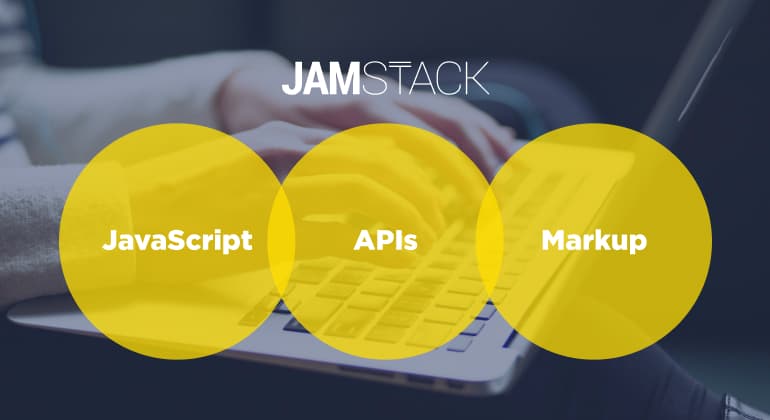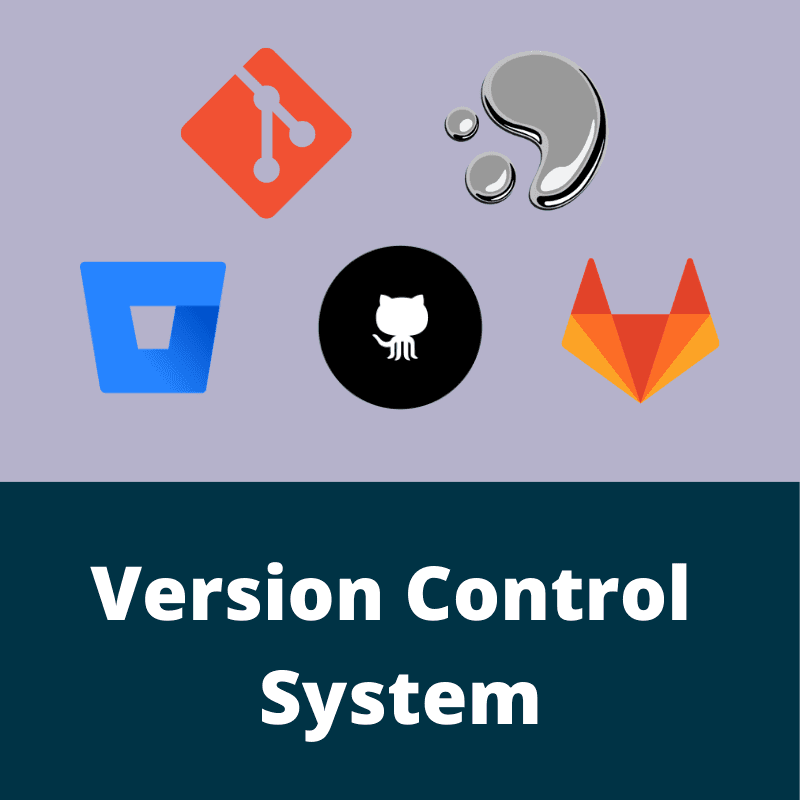
Jamstack Developer Skills: Navigating the Modern Web Development Landscape
by Irina KedyarovaAugust 22nd, 2023
Summary
What is a Jamstack developer?
Front-end Development for Jamstack
JavaScript Frameworks for Jamstack
Static Site Generators
Version Control Systems
Web APIs and Integrations in Jamstack
FAQs
Scroll to read all the article.
What is a Jamstack developer?
A Jamstack developer is a professional in the field of web development who specializes in creating websites and applications using the Jamstack architecture. Jamstack stands for "JavaScript, APIs, and Markup," and it represents a modern approach to building digital experiences that prioritize speed, security, and scalability.
Jamstack developers work with a variety of technologies and tools to create dynamic and interactive web applications. They leverage client-side rendering and APIs to separate the frontend and backend of a website, resulting in improved performance and easier maintenance. This architecture allows developers to focus on delivering a seamless user experience while also benefiting from the flexibility of microservices and serverless computing.
In essence, a Jamstack developer is skilled in various programming languages, frontend frameworks, APIs, and cloud services. They have a deep understanding of how to optimize website performance, integrate APIs for data and functionality, and ensure a secure and responsive user interface. By mastering these skills, Jamstack developers play a pivotal role in shaping the modern web development landscape.
Front-end Development for Jamstack
Front-end development for Jamstack is a crucial aspect of creating modern and high-performance websites and applications. In the context of the Jamstack architecture, the front end refers to the user interface and user experience components of a website or application. It involves designing and building the visible parts of the site that users interact with directly.
Front-end developers for Jamstack projects need to have a strong grasp of HTML, CSS, and JavaScript—the fundamental building blocks of web development. They work with these technologies to create visually appealing and responsive layouts, define styles and animations, and implement interactive features that engage users.
One of the key advantages of Jamstack architecture is that it allows front-end developers to focus on crafting exceptional user experiences without being tightly coupled to the backend logic. This separation enables faster development cycles and improved performance, as the front end can be cached and delivered directly from content delivery networks (CDNs).

Front-end developers also collaborate closely with back-end and API developers to integrate data and functionality into the user interface. They consume APIs to retrieve and display dynamic content, such as blog posts, product listings, or user-generated data.
In addition to core front-end skills, Jamstack front-end developers should be familiar with client-side frameworks like React, Vue.js, or Svelte. These frameworks enable the creation of dynamic and interactive user interfaces, enhancing the overall user experience.
Overall, front-end development for Jamstack involves creating visually appealing, performant, and interactive user interfaces while leveraging the architecture's benefits of separation of concerns and improved site speed. This combination of skills and practices results in modern web applications that deliver exceptional user experiences.
JavaScript Frameworks for Jamstack
JavaScript frameworks play a significant role in the Jamstack architecture, enhancing the development of modern and dynamic web applications. These frameworks empower developers to create interactive user interfaces and provide seamless experiences for users. Here are some prominent JavaScript frameworks commonly used in the context of Jamstack:
1) React:
React, developed by Facebook, is one of the most widely used JavaScript libraries for building user interfaces. Its component-based architecture and virtual DOM make it efficient for creating dynamic and responsive front ends. React is particularly well-suited for Jamstack applications, as its modular structure aligns with the decoupled nature of the architecture.
2) Vue.js:
Vue.js is a progressive JavaScript framework that focuses on simplicity and flexibility. It allows developers to incrementally adopt its features and integrate them into existing projects. Vue's reactivity system simplifies the process of building interactive components, making it a popular choice for Jamstack projects.
3) Svelte:
Svelte is an innovative framework that shifts much of the work to compile-time, resulting in smaller and faster runtime code. It enables developers to write components with standard HTML, CSS, and JavaScript, and then compiles them into efficient and optimized code. Svelte is well-suited for building fast and lightweight Jamstack applications.
4) Angular:
Angular is a comprehensive JavaScript framework developed by Google. It provides a full-fledged ecosystem for building web applications, offering features like dependency injection, two-way data binding, and powerful routing capabilities. While Angular's complexity may be better suited for larger projects, it can also be used effectively in Jamstack applications.
5) Next.js (for React) and Nuxt.js (for Vue.js):
Next.js and Nuxt.js are frameworks built on top of React and Vue.js, respectively. They provide server-side rendering (SSR) and static site generation (SSG) capabilities, enhancing the performance and SEO of Jamstack applications. These frameworks simplify the process of creating optimized and pre-rendered websites.
6) Gatsby:
Gatsby is a React-based framework specifically designed for building blazing-fast websites and applications. It utilizes GraphQL to efficiently fetch data and pre-fetches content, resulting in rapid load times. Gatsby is particularly popular for content-driven websites and blogs within the Jamstack architecture.
In the dynamic landscape of web development, choosing the right JavaScript framework depends on factors like project requirements, developer familiarity, and the desired user experience. Regardless of the choice, these frameworks enable Jamstack developers to create powerful and engaging applications that leverage the benefits of the modern architecture.

Static Site Generators
Static Site Generators (SSGs) are a pivotal technology in the realm of modern web development, particularly within the context of the Jamstack architecture. These tools revolutionize the process of building websites by enabling developers to create efficient, secure, and high-performance sites that are pre-rendered and served as static files.
Unlike traditional content management systems (CMS) that generate web pages dynamically on each request, SSGs create fully-rendered web pages in advance, which can be quickly delivered to users directly from content delivery networks (CDNs).
Advantages of Static Site Generators:
1) Performance:
Static sites load quickly since there's no server-side processing required. This results in faster page load times and better user experiences.
2) Security:
With no database or server-side logic, the attack surface is minimized, reducing the risk of vulnerabilities.
3) Scalability:
Static sites are inherently scalable. CDNs can distribute content globally, handling traffic spikes without stressing servers.
4) SEO:
Pre-rendered content is more accessible to search engines, improving search engine optimization (SEO) rankings.
5) Version Control:
Content is stored as files, enabling easy version control using tools like Git.
Popular Static Site Generators:
1) Jekyll:
Jekyll is one of the earliest and most popular SSGs. It's written in Ruby and powers GitHub Pages, making it a favorite among developers.
2) Hugo:
Hugo, built with the Go programming language, is known for its speed and performance. It's suitable for projects of all sizes.
3) Gatsby:
Gatsby is a React-based SSG that leverages GraphQL for data fetching. It's known for creating incredibly fast and interactive websites.
4) Next.js and Nuxt.js:
While primarily frameworks, Next.js (for React) and Nuxt.js (for Vue.js) offer SSG capabilities for enhanced performance and SEO.
5) Eleventy (11ty):
Eleventy is a versatile SSG that works with multiple template languages and has a minimal setup process.
How SSGs Fit into the Jamstack:
Static Site Generators are a cornerstone of the Jamstack architecture. They allow developers to create content-rich, dynamic websites without sacrificing performance or security. By pre-rendering pages and separating concerns between content and presentation, SSGs enable the creation of scalable, optimized, and maintainable web applications.
Version Control Systems

Version Control Systems (VCS) are essential tools in the field of software development, enabling teams to collaboratively manage and track changes to their codebase. These systems provide a structured and organized way to keep track of code revisions, collaborate effectively, and ensure the integrity of a project's source code.
Advantages of Version Control Systems:
1) History Tracking:
VCS keeps a comprehensive history of every change made to the codebase, allowing developers to see who made each change and when.
2) Collaboration:
Developers can work collaboratively on the same project without overwriting each other's work, thanks to branching and merging features.
3) Code Integrity:
VCS helps maintain the integrity of the codebase by preventing accidental or unauthorized changes.
4) Revert and Rollback:
If a mistake is made or a bug is introduced, developers can easily revert to a previous version of the code.
5) Documentation:
VCS logs provide valuable documentation of code changes, aiding in troubleshooting and understanding the evolution of the project.
Types of Version Control Systems:
1) Centralized VCS (CVCS):
In CVCS, there's a single central repository where all developers collaborate. Examples include CVS and Subversion (SVN). However, these systems have limitations like a single point of failure and potential network dependence.
2) Distributed VCS (DVCS):
DVCS creates a full copy of the repository on each developer's machine. This approach offers more flexibility and eliminates single points of failure. Git and Mercurial are popular DVCS options.
Using VCS in the Jamstack:
In the context of the Jamstack architecture, Version Control Systems play a critical role in managing the source code for frontend and backend components, content files, templates, and configuration files. By utilizing a VCS like Git, developers can manage the entire codebase, ensuring seamless collaboration, version control, and the ability to rollback changes if needed.
Web APIs and Integrations in Jamstack
Web APIs and integrations are integral components of the Jamstack architecture, enabling developers to create dynamic and feature-rich web applications. By connecting with external services, data sources, and third-party platforms, developers can enhance the functionality, content, and interactivity of their Jamstack projects. Here's an overview of how web APIs and integrations contribute to the Jamstack ecosystem:
Web APIs: Enabling Data Exchange
A Web API (Application Programming Interface) serves as a bridge that allows different software applications to communicate and exchange data. In the context of Jamstack, web APIs play a crucial role in fetching and delivering data from various sources, including databases, content management systems (CMS), and external services. They enable developers to access dynamic content and functionalities, even while maintaining the architecture's static and decoupled nature.

Integrations in Jamstack: Enhancing Functionality
Integrations refer to the process of connecting third-party services or platforms with a web application to extend its capabilities. In the Jamstack architecture, integrations can take various forms:
1) Content Integrations:
Integrating a headless CMS allows content creators to manage and update content without altering the frontend code. The CMS provides an API to deliver content to the frontend, maintaining a separation of concerns.
2) Third-Party APIs:
Developers can integrate external APIs to provide additional functionalities such as payment processing, social media sharing, geolocation, and more.
3) Authentication and User Management:
Integrating authentication providers like OAuth or OpenID Connect enhances security and user experience by enabling users to log in using existing accounts.
4) Search and Filtering:
Integrating search APIs allows users to search and filter content efficiently, improving user experience and content discoverability.
5) E-commerce:
Integrations with e-commerce platforms enable seamless product management, cart functionality, and secure payment processing.
Benefits of Web APIs and Integrations in Jamstack:
1) Efficiency:
Web APIs and integrations save development time by leveraging existing services and functionalities.
2) Scalability:
External services can handle specific tasks, offloading the application's workload and ensuring scalability.
3) Dynamic Content:
APIs provide a way to deliver dynamic content while still benefiting from the performance advantages of static site delivery.
4) Customization:
Integrations allow developers to tailor their applications to specific use cases and user needs.
5) Global Services:
By utilizing third-party services, developers can provide global services like geolocation, language translation, and currency conversion.
Web APIs and integrations play a pivotal role in extending the capabilities of Jamstack applications. By leveraging these technologies, developers can create dynamic, feature-rich, and interactive web experiences while maintaining the architecture's performance and security benefits.
Best Frequently Asked Questions (FAQs)
Becoming a proficient Jamstack developer involves more than just coding. It requires a holistic approach that spans frontend expertise, API handling, serverless architecture, security, optimization, and more. By mastering these skills, developers can create cutting-edge, high-performance web applications that align with the demands of the modern digital landscape.
Comments
As a developer, I'm always looking for resources that help me stay current. This article did just that! The breakdown of different skills and technologies, along with their importance, is spot-on. I appreciate the writer's emphasis on continuous learning—it's a must-read for anyone serious about web development.
CodeGeekGirl
Leave your comment
Your feedback is very important to us. Share your thoughts on what you read, or tell your own story.
Rating
Readers also enjoyed

In today's digital age, e-commerce has revolutionized the way businesses operate and consumers shop. One significant development in the e-commerce landscape is the emergence of multivendor marketplaces. These platforms have gained immense popularity due to their ability to connect sellers with a vast pool of customers and provide a seamless shopping experience. This article delves into the concept of multivendor marketplaces, exploring their benefits, challenges, and their impact on the e-commerce ecosystem.
July 17th, 2023

In the ever-evolving world of web development and technology, the Jamstack has emerged as a powerful approach for building fast, secure, and scalable websites. As businesses strive to provide seamless user experiences and leverage the latest advancements in web development, the need for Jamstack agencies has become increasingly important. In this article, we will explore the concept of a Jamstack agency, its benefits, and why it can be a game-changer for your web development projects.
July 14th, 2023

In the fast-paced world of web development, staying ahead of the curve is essential. One approach that has gained significant attention is Jamstack CMS. This article aims to unravel the concept of Jamstack CMS, its advantages, implementation best practices, and more. Whether you're a seasoned developer or a content creator looking to enhance your website's performance, join us as we dive into the fascinating realm of Jamstack CMS. By the end of this article, you'll have a solid understanding of how Jamstack CMS can revolutionize your web development workflow. So, let's embark on this journey and unlock the potential of Jamstack CMS together!
July 13th, 2023
Contact Us
Our email is manager@alt-team.com
Please, do not hesitate to contact us via e-mail or use the form below if you need a quote for your E-commerce project or have any questions about our products or services. We will be glad to answer you in a short time.